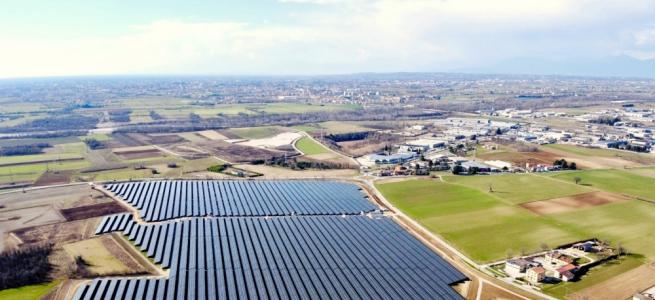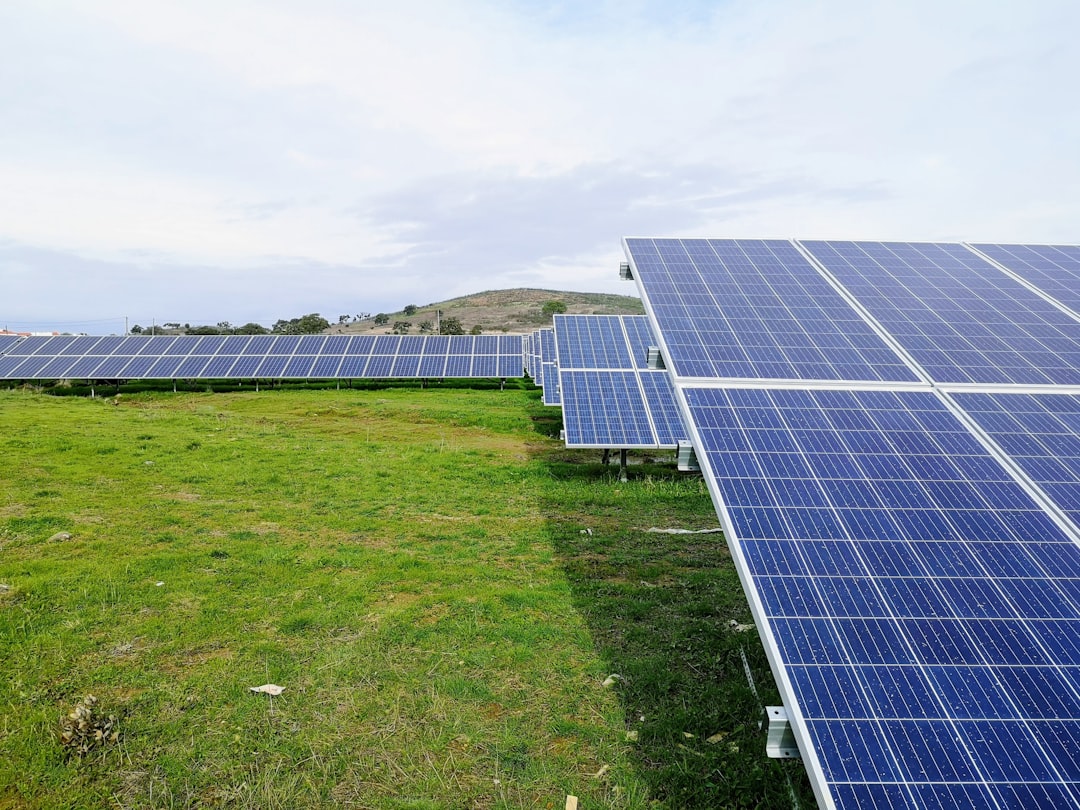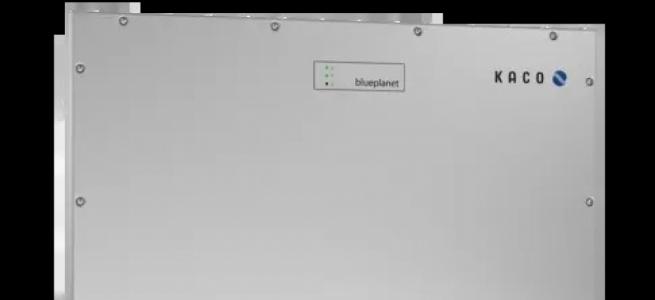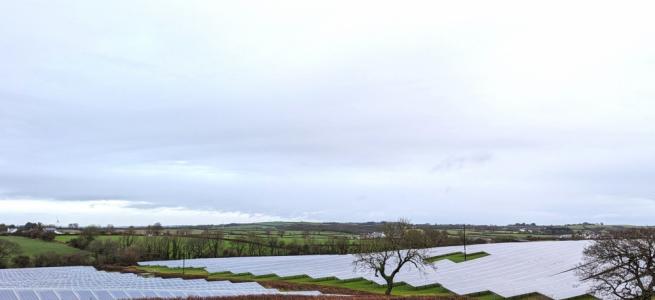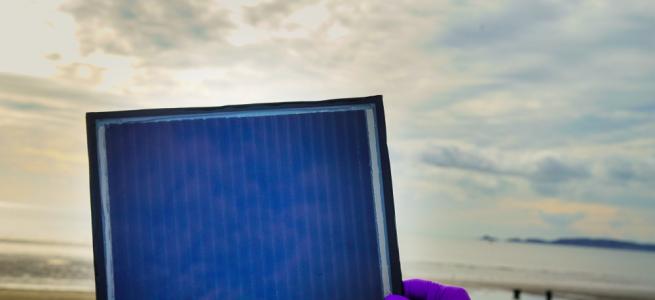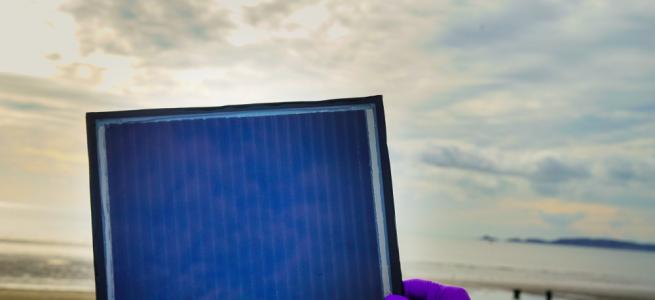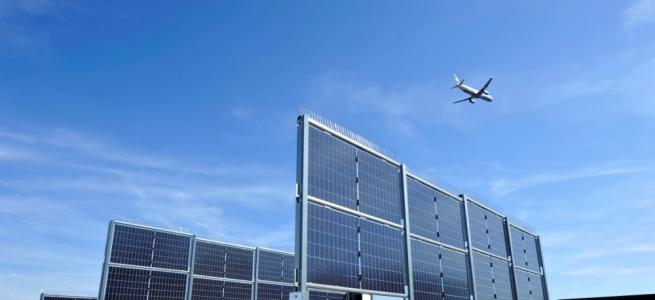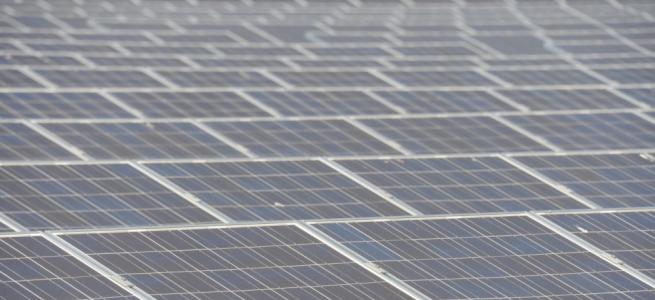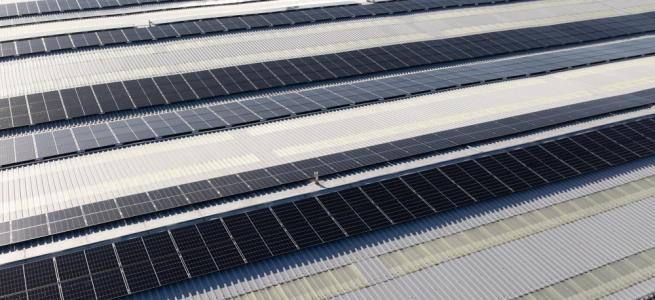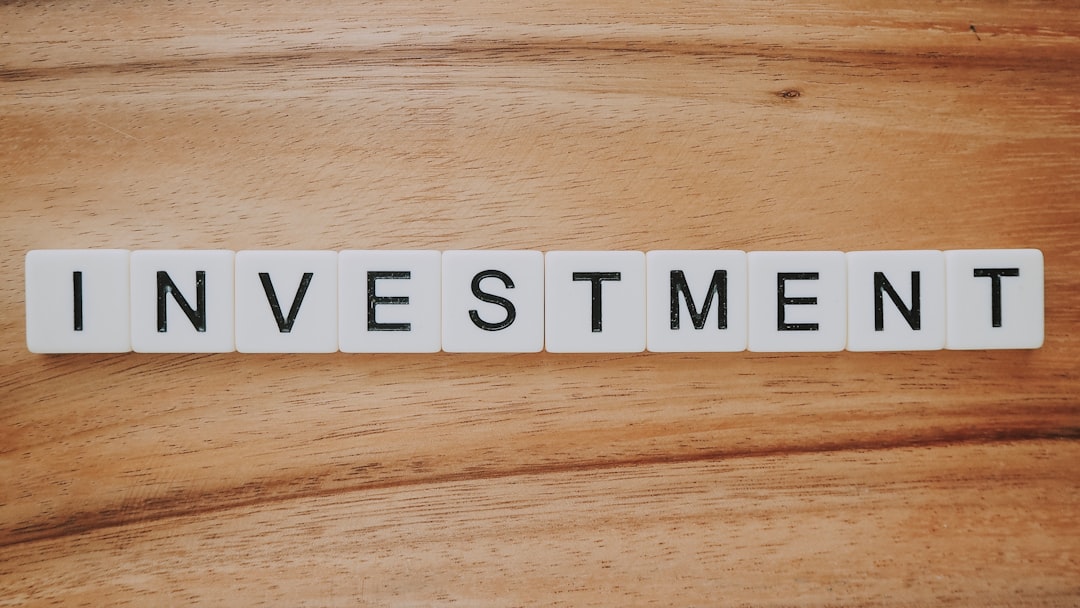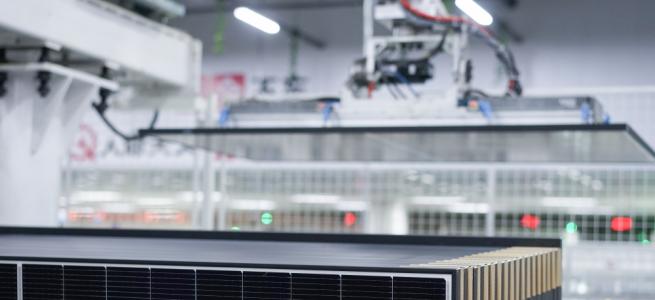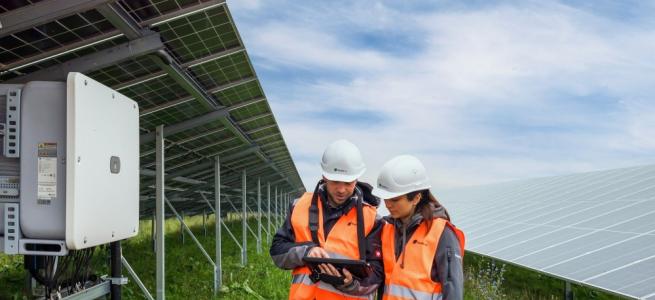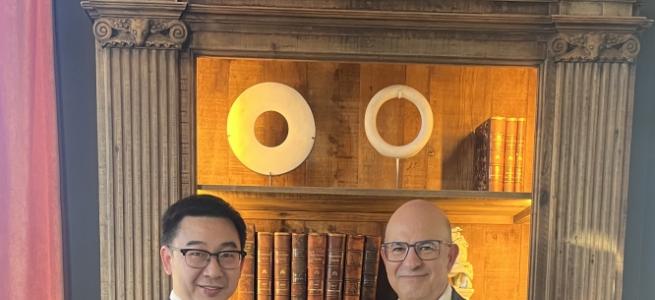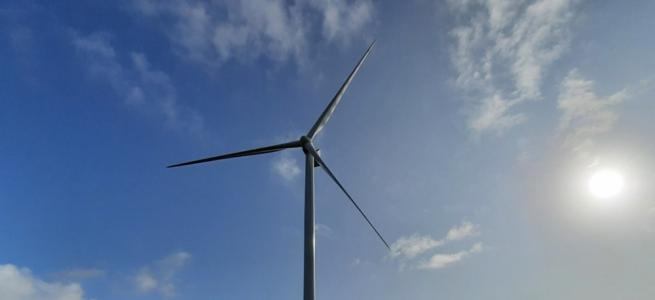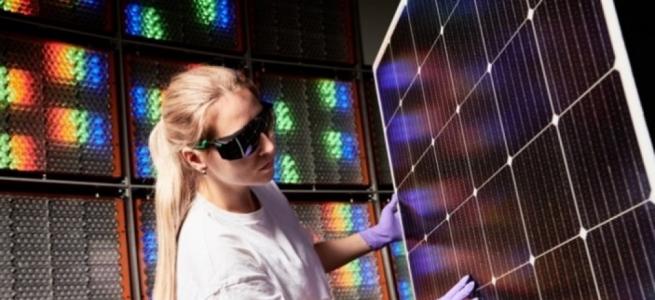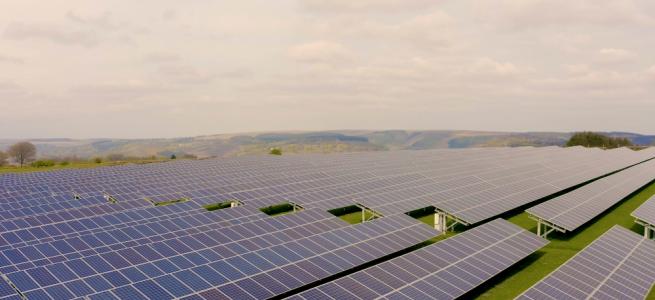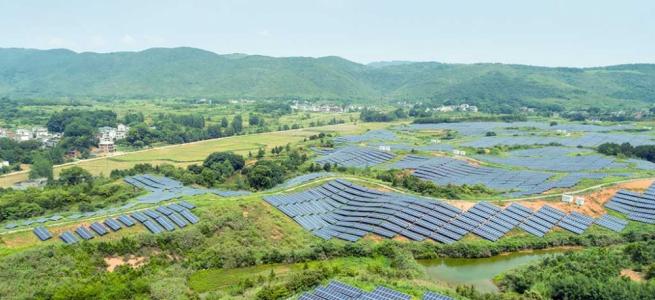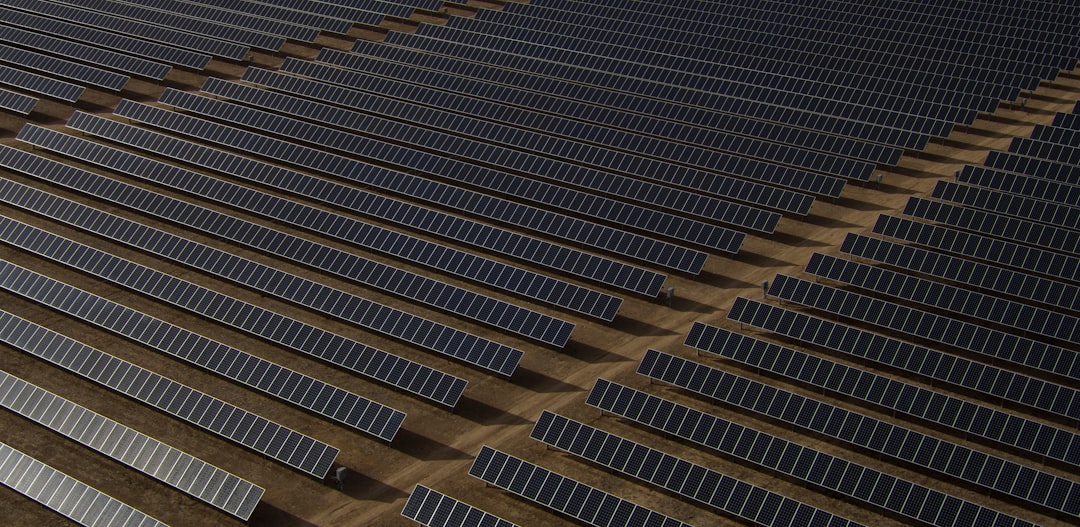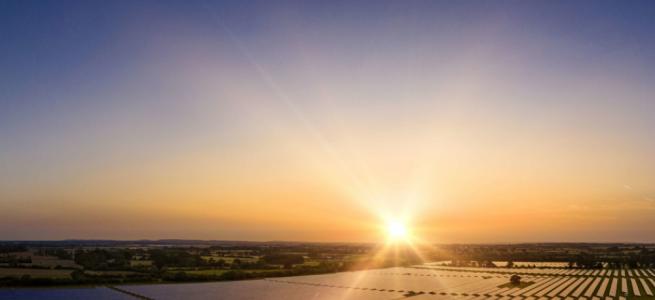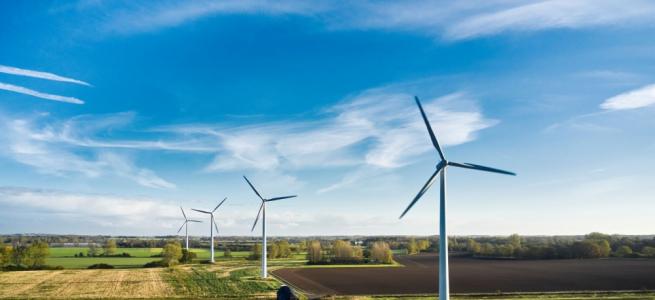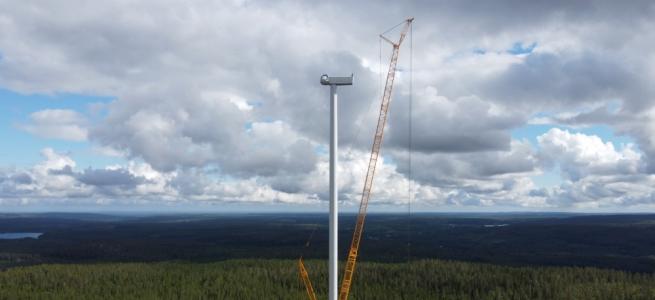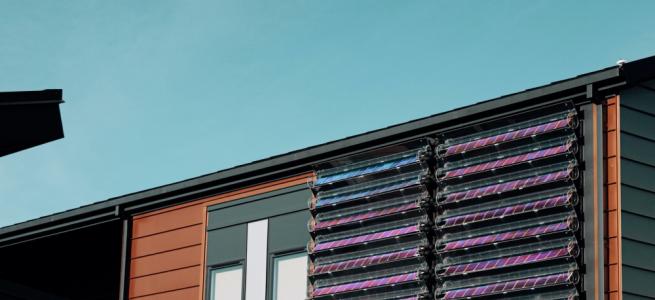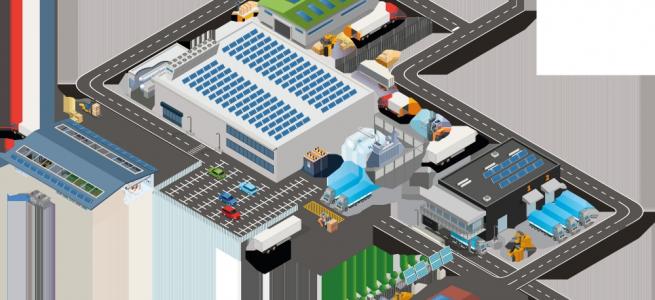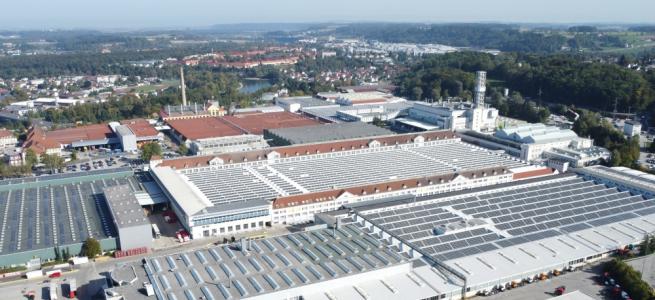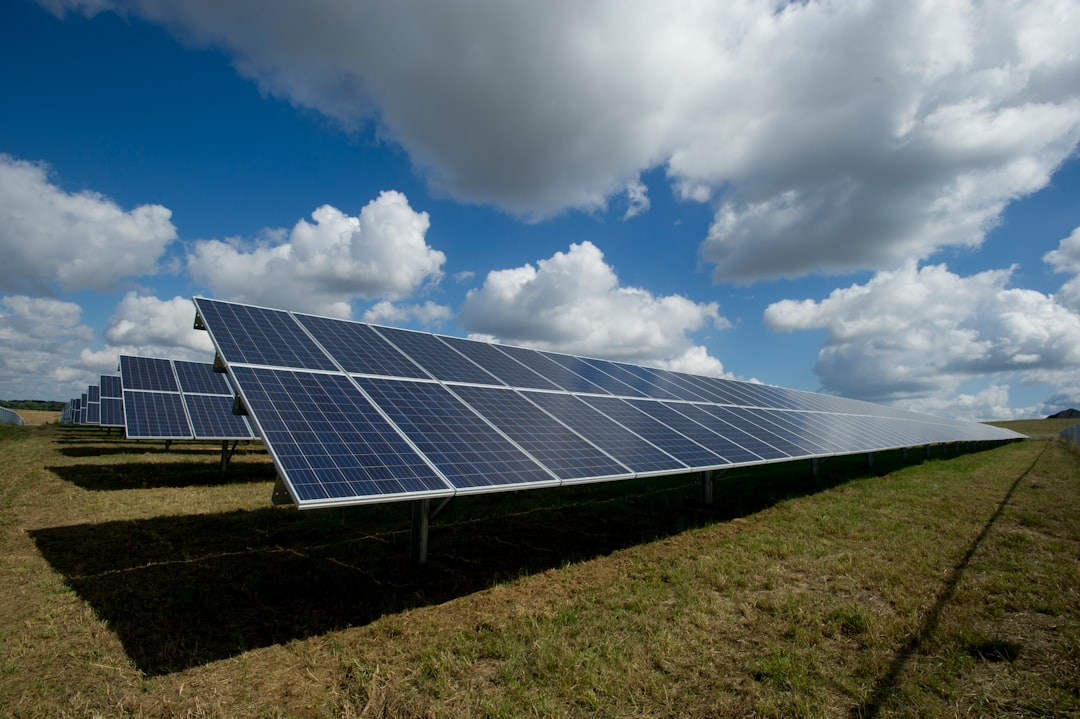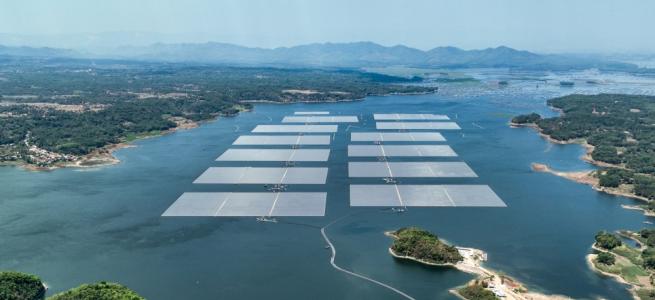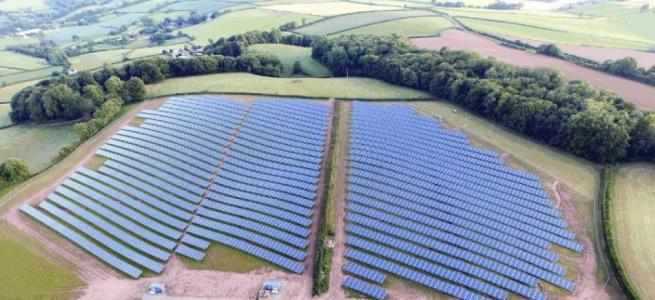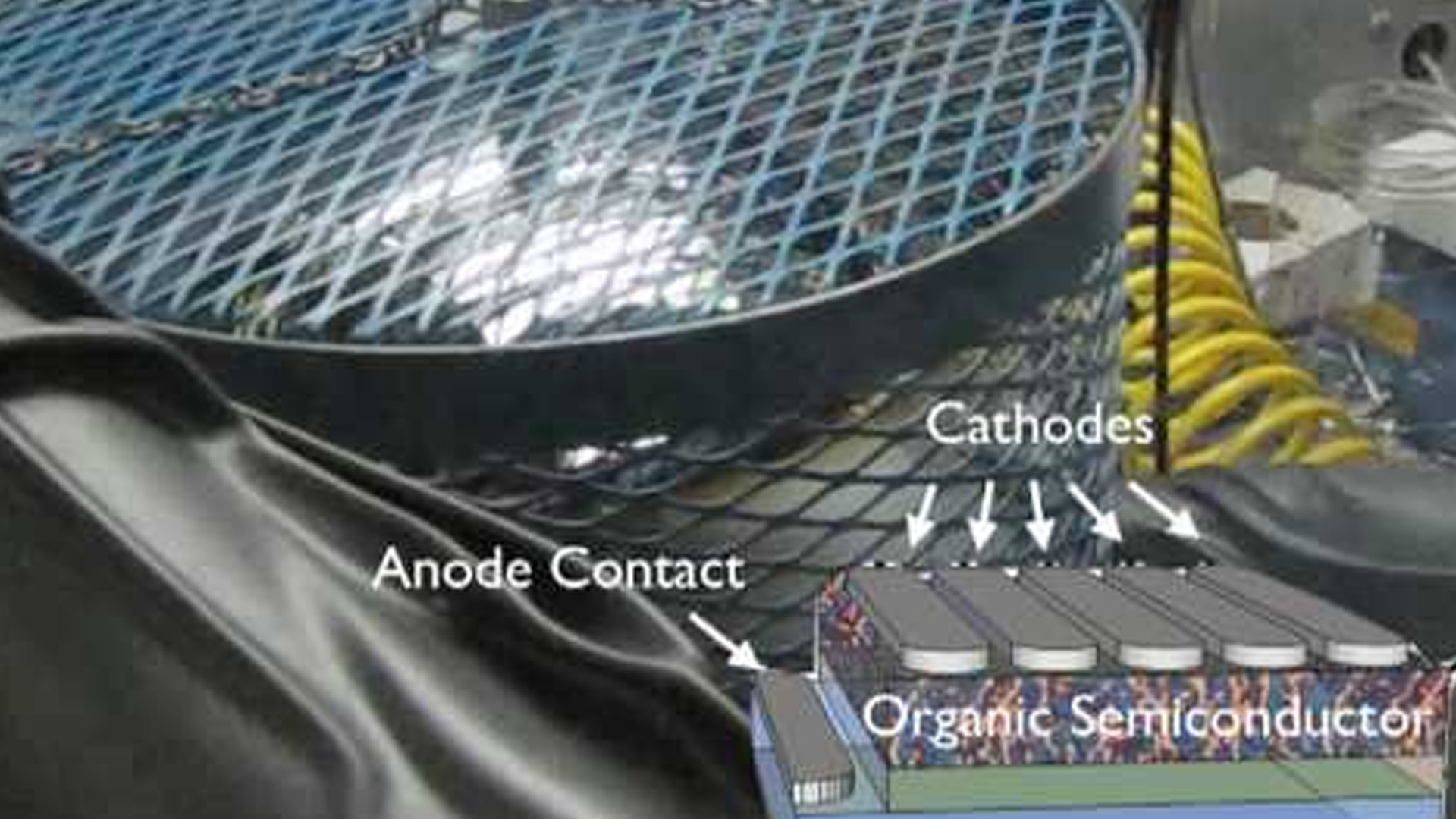News Article
Ireland plans renewable energy transition by 2050
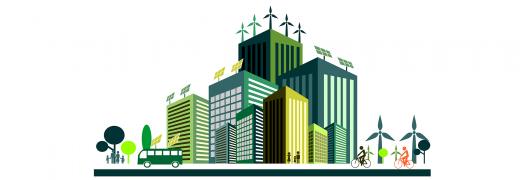
The Irish government has announced a framework for cutting carbon emissions up to 95 percent by 2050, radically altering its energy future. Renewable and low carbon resources will replace Ireland's long-standing reliance on coal, peat and oil for heating and electricity generation.
After years of study and consultation with citizens, industry and academia, coupled with mounting evidence of global climate change, the Irish government in December rolled out an ambitious framework for eliminating fossil fuels as a means to heat, cool and energize the nation.
In his 125-page white paper, "˜Ireland's Transition to a Low Carbon Energy Future,' Energy Minister Alex White described ways that Ireland could transition from traditional reliance on fossil fuels, embracing not only EU mandates but the opportunity to rework the nation, creating jobs and new industries along the way.
"For the first time an Irish Government has set its course on the eventual elimination of fossil fuels from our energy system," Minister White said at an event officially releasing the plan. "We will only achieve this ambitious degree of decarbonisation by engaging all citizens in energy policy and its implementation. Meeting the challenge of global warming can no longer be confined to the realm of international treaties or government decisions. It is about changing the way we heat our homes and businesses"¦reassessing how we travel"¦participating in decisions about the infrastructure needs of a low carbon Ireland."
The white paper identifies 90 actions that will be key to moving away from high carbon fuels like peat and coal to low carbon or renewable alternatives; fossil fuels will largely be replaced by renewable energy sources by 2050 under the plan. The ultimate goal of eliminating greenhouse gas (GHG) emissions from the nation's energy economy is set for 2100 when energy derived from fossil fuels should fall to "zero or below," the minister said.
Work on the new Irish framework for a renewable energy future has been proceeding since Ireland's last energy white paper was published in 2007. The new framework focuses on current and medium-length plans through 2030, leaving room for technological advances, public interaction, and regular progress assessments to guide the plan toward its ultimate goals in 2050 and beyond. This new energy plan builds on the Department of Communications, Energy and Natural Resources (DCENR) publication of a Green Paper on Irish energy policy in 2014.
From the outset government leaders acknowledged that fundamental change - even when desirable - is never easy. Their efforts were driven by the prospects of facing runaway global warming and direct consequences for Ireland, other EU member states and the entire world, they stated. The technology already exists to affect positive change in many ways. They expressed a conviction that growing research into alternative energy will address issues such as grid-scale energy storage and combining distributed power with decentralized energy systems much the same way as other global efforts have reduced the cost of solar energy dramatically since 2006. With the technology that exists today, and new innovations that are logically expected, the Irish leadership said its 2050 goals are not only achievable, but may be met even more quickly than is foreseeable today.
Outlining key elements of the plan, the Irish Energy Ministry white paper describes actions and detailed processes needed to enable Ireland's transformation to a low carbon future. They believe this can be achieved by:
The role Irish citizens will need to play in realizing the plan's key objectives was a frequent point discussed in the Energy Ministry's framework plan. Although six pages specifically speak about the need for citizen engagement, consultations between government and citizens saw some type of reference throughout the white paper. Barely a page goes by without comments concerning interaction between government and its constituencies.
The Aran example
Taking charge of their energy future is nothing new to the Aran Islands whose residents participated in a number of projects designed to create energy independence by 2022. Like much of the Irish coastline, the Arans have great potential for off-shore wind generation, but given the cost and grid connection issues of sea borne turbines, islanders focused on means that could benefit daily life without massive government programs. They created pilot energy co-ops, retrofitted homes and businesses for higher energy efficiency and took part in the trial use of electric vehicles (EVs) for public transport. A large portion of the Arans' 1,247 residents ultimately participated in various projects that resulted in a 78 percent reduction in transportation energy costs and a 68 percent reduction in energy imports, along with many other benefits. Results such as these were characterized by government officials as indicative of what Ireland can do to take charge of its unique energy requirements without increasing energy costs, compromising daily life or forfeiting business opportunities.
Becoming active energy consumers
Unless someone is actively engaged in the business of energy, the paper describes most Irish citizens as "˜passive' consumers like almost everyone else across the globe. To achieve success the government envisions citizens changing from passive to "˜active' energy consumers: persons who look for ways their lives can be made better by understanding proposed transitional energy practices and then taking charge of their own energy futures.
Ireland is not unique in its present day energy consumption practices. In most parts of the world the generation of electrical power, home and business heating/cooling all depend to some degree on government entities or utilities. These paradigms of energy generation came into existence more than a century ago when centralized power generation developed because of electricity's potential to transform daily living. The Ministry's white paper envisions an Ireland in which everyone not only knows how much energy their home or business utilizes, but works to actively conserve energy while embracing new technologies enabling independence.
A renewable foundation
Ireland is already committed to renewable energy. At the time its white paper was published, the government noted that Ireland obtained nearly 23 percent of its energy from renewable resources, with most of that coming through wind energy.
Solar (either thermal or photovoltaic [PV] power) is currently playing a minority role in the Irish energy economy. Solar is outpaced by contributions from inland wind electricity generation, hydroelectric and geothermal power. But as the government white paper concludes, the dramatic cost reduction in PV power over the last 10 years has translated into cost parity or near parity with fossil fuel generation. In looking at levelized cost of electricity (LCOE) comparisons, PV power is already cost-effective in many locations. In Germany, for example, solar energy (most of it PV,) accounts for anywhere between 20 percent and 50 percent of the country's electricity needs, depending on the time of year and other variables. The upside potential for solar in Ireland is very great.
Summary
Ireland's transition to a renewable energy future has been charted by its Energy Ministry within a framework of global concerns for reducing GHGs and thereby reducing the threat of global warming. But beyond esoteric concerns for collective world welfare, the plan also charts a course that shows energy independence has real benefits beyond those highlighted in the recent Paris Climate Accord.
Taking charge of a nation's energy future empowers everyone from citizens to industry to international business with confidence that local energy supplies are securely held within Ireland's borders. Modernization of the electricity grid, cooperation with Ireland's neighbors and the international community provides a basis for future business and economic growth that benefits everyone. By taking charge now, Ireland can say with confidence that it is creating its own future with independence from foreign interests. Although its plan is ambitious, Ireland is demonstrating real commitment; this should help every citizen see his or her role in a low carbon energy future as something they can take charge of starting today.
In his 125-page white paper, "˜Ireland's Transition to a Low Carbon Energy Future,' Energy Minister Alex White described ways that Ireland could transition from traditional reliance on fossil fuels, embracing not only EU mandates but the opportunity to rework the nation, creating jobs and new industries along the way.
"For the first time an Irish Government has set its course on the eventual elimination of fossil fuels from our energy system," Minister White said at an event officially releasing the plan. "We will only achieve this ambitious degree of decarbonisation by engaging all citizens in energy policy and its implementation. Meeting the challenge of global warming can no longer be confined to the realm of international treaties or government decisions. It is about changing the way we heat our homes and businesses"¦reassessing how we travel"¦participating in decisions about the infrastructure needs of a low carbon Ireland."
The white paper identifies 90 actions that will be key to moving away from high carbon fuels like peat and coal to low carbon or renewable alternatives; fossil fuels will largely be replaced by renewable energy sources by 2050 under the plan. The ultimate goal of eliminating greenhouse gas (GHG) emissions from the nation's energy economy is set for 2100 when energy derived from fossil fuels should fall to "zero or below," the minister said.
Work on the new Irish framework for a renewable energy future has been proceeding since Ireland's last energy white paper was published in 2007. The new framework focuses on current and medium-length plans through 2030, leaving room for technological advances, public interaction, and regular progress assessments to guide the plan toward its ultimate goals in 2050 and beyond. This new energy plan builds on the Department of Communications, Energy and Natural Resources (DCENR) publication of a Green Paper on Irish energy policy in 2014.
From the outset government leaders acknowledged that fundamental change - even when desirable - is never easy. Their efforts were driven by the prospects of facing runaway global warming and direct consequences for Ireland, other EU member states and the entire world, they stated. The technology already exists to affect positive change in many ways. They expressed a conviction that growing research into alternative energy will address issues such as grid-scale energy storage and combining distributed power with decentralized energy systems much the same way as other global efforts have reduced the cost of solar energy dramatically since 2006. With the technology that exists today, and new innovations that are logically expected, the Irish leadership said its 2050 goals are not only achievable, but may be met even more quickly than is foreseeable today.
Outlining key elements of the plan, the Irish Energy Ministry white paper describes actions and detailed processes needed to enable Ireland's transformation to a low carbon future. They believe this can be achieved by:
- Substantially changing the behaviour of citizens, industry and government
- Becoming more energy efficient
- Generating electricity from renewable sources of which Ireland has a plentiful indigenous supply
- Moving to lower emissions fuels (e.g. away from peat and coal to natural gas), and ultimately away from fossil fuels altogether
- Increasing the use of electricity and bioenergy to heat homes and fuel transportation
- Increasing the Biofuels Obligation and improving take-up of zero and low carbon vehicles powered by electricity and natural gas
- Supporting the wide scale deployment of renewable heat in the business, public and residential sectors
- Adopting new renewable energy technologies as they emerge
The role Irish citizens will need to play in realizing the plan's key objectives was a frequent point discussed in the Energy Ministry's framework plan. Although six pages specifically speak about the need for citizen engagement, consultations between government and citizens saw some type of reference throughout the white paper. Barely a page goes by without comments concerning interaction between government and its constituencies.
The Aran example
Taking charge of their energy future is nothing new to the Aran Islands whose residents participated in a number of projects designed to create energy independence by 2022. Like much of the Irish coastline, the Arans have great potential for off-shore wind generation, but given the cost and grid connection issues of sea borne turbines, islanders focused on means that could benefit daily life without massive government programs. They created pilot energy co-ops, retrofitted homes and businesses for higher energy efficiency and took part in the trial use of electric vehicles (EVs) for public transport. A large portion of the Arans' 1,247 residents ultimately participated in various projects that resulted in a 78 percent reduction in transportation energy costs and a 68 percent reduction in energy imports, along with many other benefits. Results such as these were characterized by government officials as indicative of what Ireland can do to take charge of its unique energy requirements without increasing energy costs, compromising daily life or forfeiting business opportunities.
Becoming active energy consumers
Unless someone is actively engaged in the business of energy, the paper describes most Irish citizens as "˜passive' consumers like almost everyone else across the globe. To achieve success the government envisions citizens changing from passive to "˜active' energy consumers: persons who look for ways their lives can be made better by understanding proposed transitional energy practices and then taking charge of their own energy futures.
Ireland is not unique in its present day energy consumption practices. In most parts of the world the generation of electrical power, home and business heating/cooling all depend to some degree on government entities or utilities. These paradigms of energy generation came into existence more than a century ago when centralized power generation developed because of electricity's potential to transform daily living. The Ministry's white paper envisions an Ireland in which everyone not only knows how much energy their home or business utilizes, but works to actively conserve energy while embracing new technologies enabling independence.
A renewable foundation
Ireland is already committed to renewable energy. At the time its white paper was published, the government noted that Ireland obtained nearly 23 percent of its energy from renewable resources, with most of that coming through wind energy.
Solar (either thermal or photovoltaic [PV] power) is currently playing a minority role in the Irish energy economy. Solar is outpaced by contributions from inland wind electricity generation, hydroelectric and geothermal power. But as the government white paper concludes, the dramatic cost reduction in PV power over the last 10 years has translated into cost parity or near parity with fossil fuel generation. In looking at levelized cost of electricity (LCOE) comparisons, PV power is already cost-effective in many locations. In Germany, for example, solar energy (most of it PV,) accounts for anywhere between 20 percent and 50 percent of the country's electricity needs, depending on the time of year and other variables. The upside potential for solar in Ireland is very great.
Summary
Ireland's transition to a renewable energy future has been charted by its Energy Ministry within a framework of global concerns for reducing GHGs and thereby reducing the threat of global warming. But beyond esoteric concerns for collective world welfare, the plan also charts a course that shows energy independence has real benefits beyond those highlighted in the recent Paris Climate Accord.
Taking charge of a nation's energy future empowers everyone from citizens to industry to international business with confidence that local energy supplies are securely held within Ireland's borders. Modernization of the electricity grid, cooperation with Ireland's neighbors and the international community provides a basis for future business and economic growth that benefits everyone. By taking charge now, Ireland can say with confidence that it is creating its own future with independence from foreign interests. Although its plan is ambitious, Ireland is demonstrating real commitment; this should help every citizen see his or her role in a low carbon energy future as something they can take charge of starting today.


